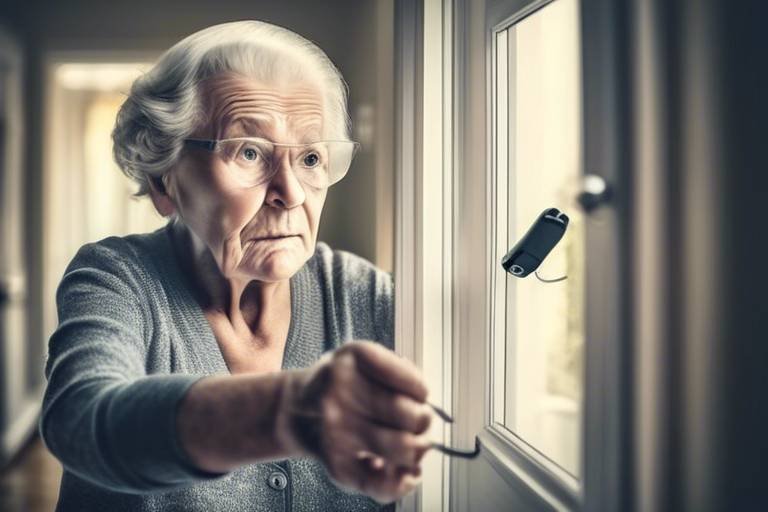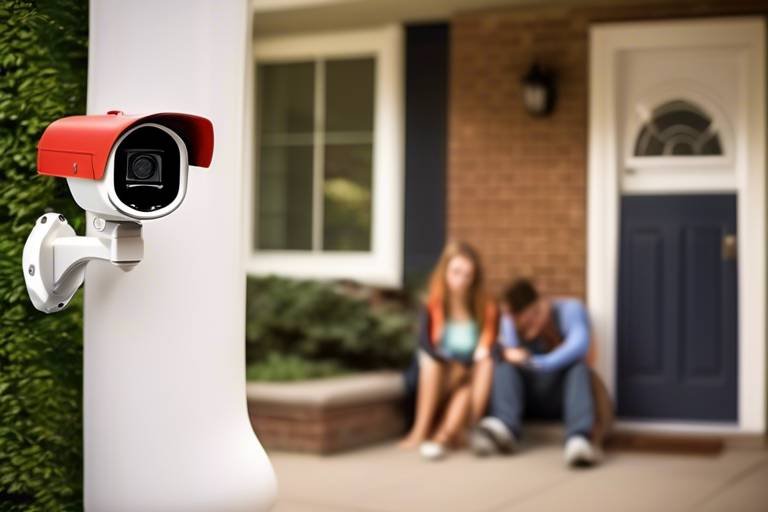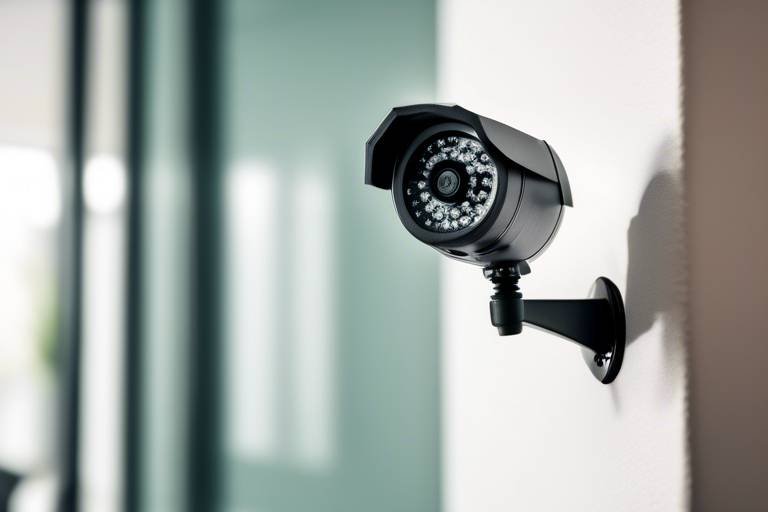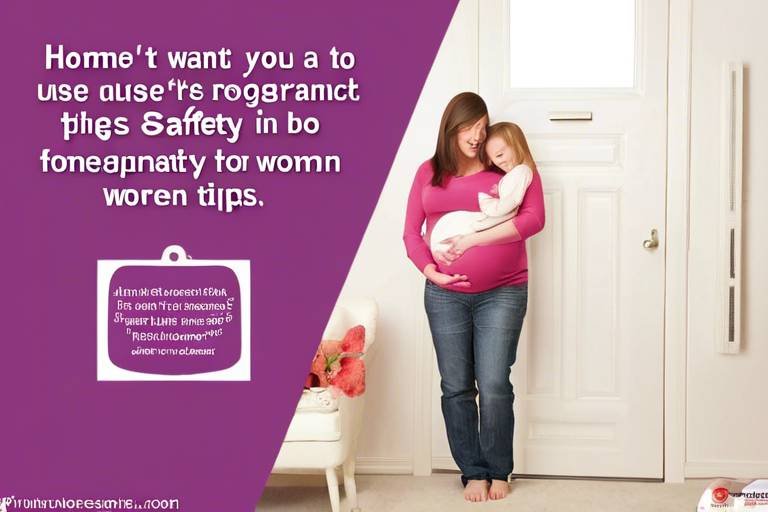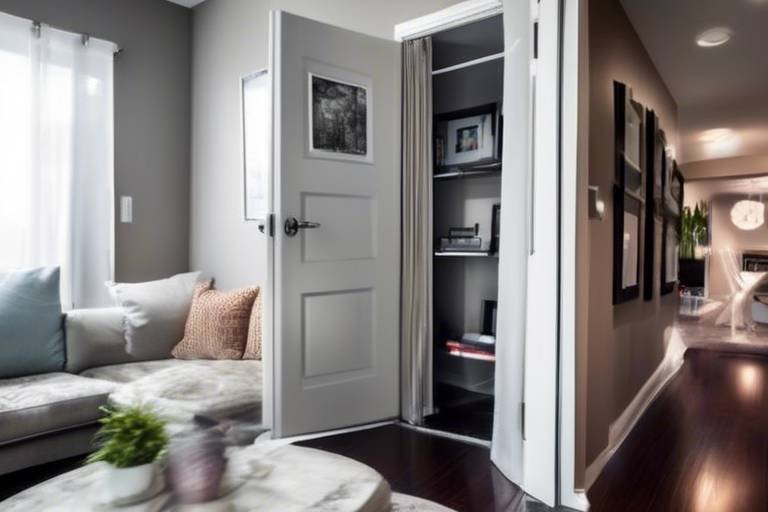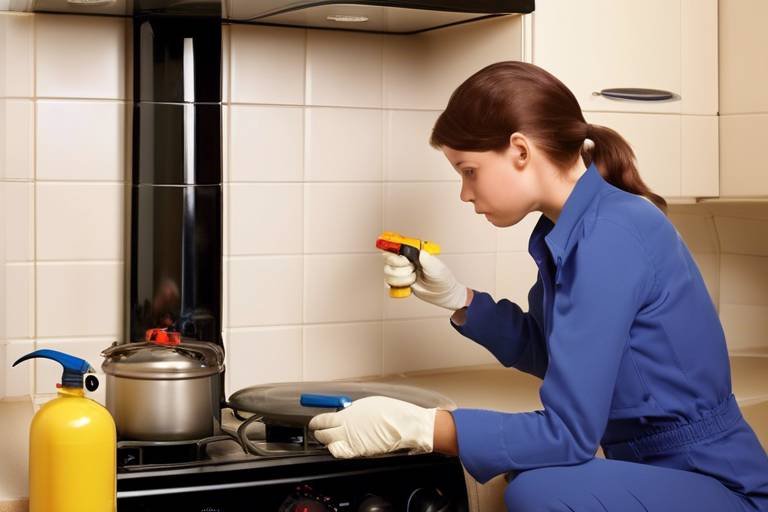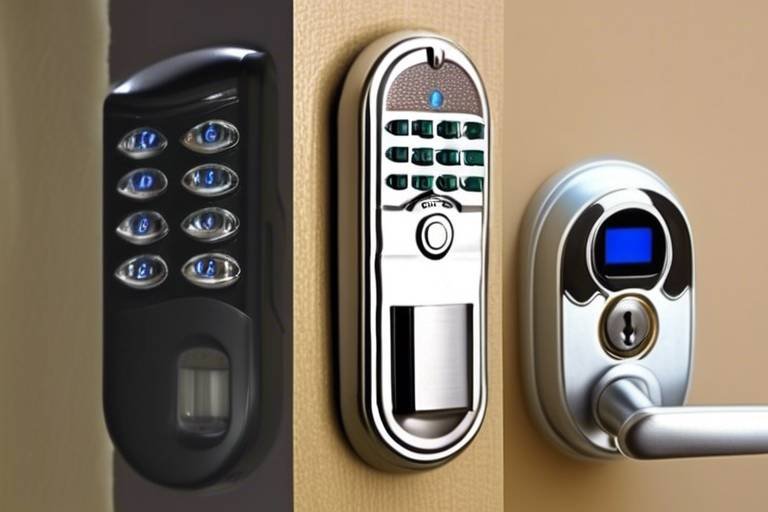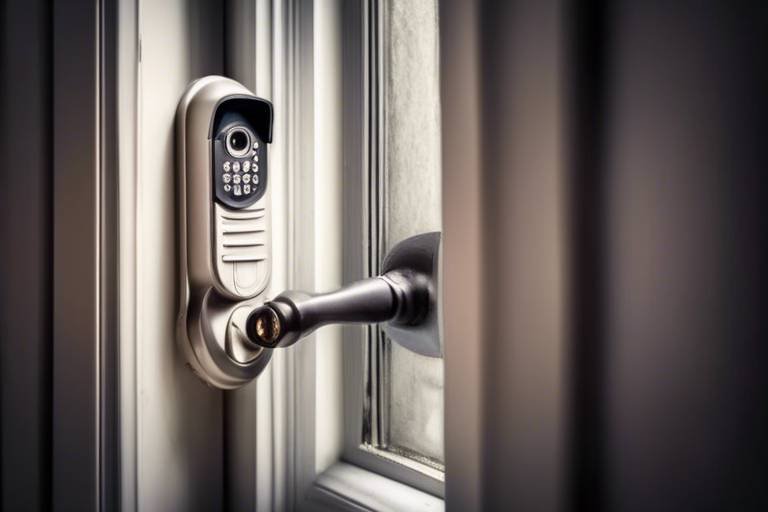Preparing Your Home for an Ageing Relative
When it comes to welcoming an ageing relative into your home, the journey can be both fulfilling and challenging. It’s not just about providing a roof over their heads; it’s about creating an environment that fosters comfort, safety, and independence. Imagine transforming your living space into a haven where they can thrive, rather than just exist. This article will guide you through essential steps to adapt your home, ensuring that your ageing loved ones feel valued and secure.
First things first, let’s talk about assessing your home’s safety. This is crucial for creating a secure environment. Have you ever walked through your house and thought, “What if I were less mobile?” Identifying potential hazards is the first step in making your home safe. Common risks include loose rugs, poor lighting, and cluttered walkways. By addressing these issues, you can significantly reduce the risk of falls and accidents. Simple solutions like securing rugs with non-slip pads, installing brighter light bulbs, and keeping pathways clear can make a world of difference.
Next up, let’s dive into creating accessible spaces. Making your home more accessible can drastically improve your relative’s mobility. Think about the layout of your living areas. Are there steps that could be replaced with ramps? Are doorways wide enough for mobility aids? These are the types of questions you should be asking. Practical modifications, such as removing thresholds and rearranging furniture for easier navigation, can greatly enhance the ease of movement throughout your home.
Assessing home safety is not just a one-time task; it’s an ongoing process. Regularly check for new hazards as your relative's needs change. For instance, consider installing handrails on both sides of stairways and ensuring that all areas of the home are well-lit. You might even want to set up a home safety checklist that you can review every few months. Here’s a quick overview of what to look for:
| Hazard | Solution |
|---|---|
| Loose rugs | Use non-slip pads or remove them |
| Poor lighting | Install brighter bulbs or additional light fixtures |
| Cluttered pathways | Regularly clear and organize spaces |
Now, let’s focus on bathroom modifications. The bathroom can be one of the most challenging areas for ageing individuals. It’s slippery, and the layout can be intimidating. Installing grab bars next to the toilet and in the shower can provide much-needed support. Additionally, consider non-slip mats to prevent falls. The goal is to create a space where they can maintain their dignity while staying safe.
When it comes to bathing, think about shower and bathtub solutions. Walk-in tubs or shower stalls with low thresholds can make a significant difference. Imagine being able to step in and out without fear of slipping! You could also look into transfer benches that allow them to sit down while getting in and out of the tub. These adaptations not only enhance safety but also promote independence.
Another critical area is toilet safety features. Installing raised toilet seats can make a huge difference in comfort and safety. Coupled with handrails, these modifications can help prevent falls and make using the bathroom a less daunting task. Remember, the goal is to empower your ageing relative to maintain their independence while ensuring their safety.
The kitchen is the heart of the home. Enhancing accessibility and safety here is vital. Simple changes like adjusting cabinet heights, using pull-out shelves, and ensuring that frequently used items are within reach can make meal prep much easier. Imagine your relative being able to prepare their favorite meal without straining or risking injury!
Effective communication is essential for the well-being of ageing relatives. It’s not just about talking; it’s about feeling connected. Consider implementing tools and strategies that facilitate better communication within your household. For instance, emergency contact systems can provide peace of mind, ensuring that help is just a button press away.
Implementing emergency contact systems ensures quick access to help when needed. There are various technologies available today, from wearable devices that alert family members to home monitoring systems that can detect falls. These solutions can greatly enhance safety and provide reassurance for both the ageing relative and their family.
Lastly, let’s discuss daily communication tools. Simple devices like large-button phones or voice-activated assistants can make it easier for your ageing relative to stay connected with family and friends. Imagine how uplifting it would be for them to have a chat with a loved one just by saying their name!
- What are the most important modifications to make for safety? Focus on bathrooms and entryways, as these are common areas for accidents.
- How can I encourage independence in my ageing relative? Provide tools and modifications that allow them to perform daily tasks with ease.
- What technologies can help improve communication? Look into emergency alert systems and user-friendly communication devices.

Assessing Home Safety
When it comes to preparing your home for an ageing relative, is the first crucial step. Think of your home as a fortress—one that should be secure and comfortable for its inhabitants. Just like you wouldn’t want a castle with hidden traps, your home shouldn’t have potential hazards lurking around. A thorough evaluation can help you identify risks that might not be immediately obvious, ensuring that your loved one can navigate their surroundings with confidence.
Start by walking through each room and evaluating the environment. Look for common risks such as:
- Loose rugs that could cause tripping.
- Insufficient lighting in hallways and staircases.
- Cluttered spaces that may block pathways.
- Sharp corners on furniture that could lead to injury.
Addressing these hazards can significantly reduce the risk of falls, which are a leading cause of injury among older adults. For instance, securing or removing loose rugs and ensuring that all areas of the home are well-lit can be game-changers. You might even consider installing motion-sensor lights that automatically illuminate dark areas when someone approaches.
Another critical aspect of home safety is ensuring that emergency contacts are easily accessible. Consider placing a list of important phone numbers, including family, friends, and local emergency services, in a prominent location. This list can serve as a lifeline in case of emergencies, providing peace of mind for both you and your ageing relative.
In addition, it’s wise to evaluate the need for assistive devices. Items such as walking aids, mobility scooters, or even personal alert systems can make a world of difference in maintaining independence while ensuring safety. These devices can empower your loved ones to move around freely without the constant fear of falling or getting injured.
Finally, don’t forget to involve your ageing relative in the assessment process. After all, they are the ones who will be living in the space. Ask for their input on what makes them feel safe and what adjustments they believe are necessary. This not only makes them feel valued but also ensures that the changes you make truly cater to their needs.
By taking the time to assess home safety, you’re not just making modifications; you’re creating a sanctuary where your ageing relative can thrive. Remember, the goal is to promote independence while ensuring that they feel secure and at home.

Creating Accessible Spaces
When it comes to making your home a haven for an ageing relative, accessibility is key. Imagine navigating a maze with obstacles at every turn; that’s what it can feel like for someone with limited mobility. By making thoughtful modifications, you can transform your living space into a comfortable and safe environment that fosters independence. Let’s dive into some practical steps you can take to create accessible spaces that not only meet the needs of your ageing loved ones but also maintain a welcoming atmosphere for everyone.
First and foremost, consider the layout of your home. Wide, clear pathways are essential. If your home has narrow hallways or rooms filled with furniture, it’s time for a reorganization. Aim for at least 36 inches of clearance in walking areas to allow for easy navigation. You might be surprised how much a little rearranging can open up the space and make it feel more inviting!
Next, think about the flooring. Smooth, non-slip surfaces are your best bet. Carpets can be tricky and pose a risk of tripping, while hardwood or laminate flooring can be slippery. Consider adding non-slip mats in areas where water might accumulate, like the kitchen and bathroom. This small change can offer a significant boost in safety. If you’re looking to make a more permanent change, you could even explore installing laminate flooring with a textured surface designed for better grip.
Now, let’s talk about furniture. Opt for pieces that are not only stylish but also functional. For example, chairs with armrests can provide extra support when sitting down or getting up. Additionally, consider lowering the height of some furniture to make it easier for your ageing relative to access. If possible, keep frequently used items within easy reach to minimize the need for stretching or bending. You can even designate specific areas in the kitchen or living room for their personal belongings to create a sense of ownership and comfort.
In the bathroom, accessibility modifications can be a game-changer. Think about installing a walk-in shower or a shower chair to make bathing easier. Grab bars near the toilet and shower can provide essential support, while a raised toilet seat can prevent strain. These changes not only enhance safety but also promote dignity and independence during daily routines.
Lastly, don’t forget about lighting! Proper lighting is crucial for preventing accidents. Ensure that all areas of the home are well-lit, especially staircases and hallways. Consider adding motion-sensor lights in key areas so that your ageing relative doesn’t have to fumble for switches in the dark. This simple addition can significantly enhance both safety and peace of mind.
In summary, creating accessible spaces in your home is a thoughtful way to support your ageing relative. By focusing on layout, flooring, furniture, bathroom modifications, and lighting, you can foster an environment that promotes safety, independence, and comfort. Remember, these changes not only benefit your loved one but also create a home that everyone can enjoy!
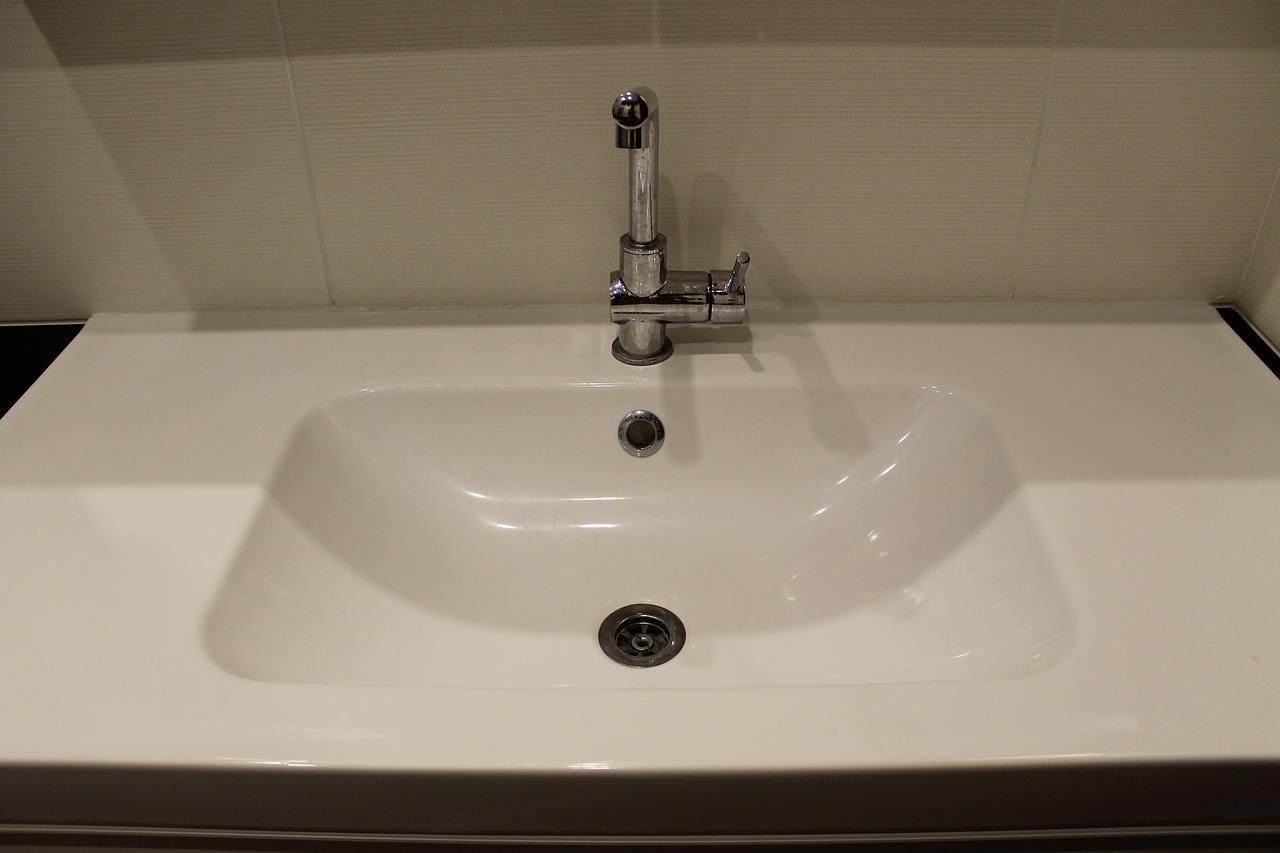
Bathroom Modifications
Bathrooms can be a real challenge for our ageing relatives, often turning daily routines into daunting tasks. Imagine stepping into a slippery tub or struggling to rise from a low toilet seat—these scenarios can lead to accidents and a loss of confidence. Therefore, making thoughtful is essential for enhancing safety and accessibility. Let's dive into some key changes that can create a welcoming and secure bathroom environment.
First and foremost, consider installing grab bars. These sturdy handrails can be placed near the toilet, shower, and bathtub, providing support and stability when getting in and out. It's like having a helping hand right there when it's needed most! Additionally, opt for non-slip surfaces on the floors. Whether it's a textured mat or slip-resistant tiles, these features can significantly reduce the risk of falls, making the bathroom a safer haven.
Now, let’s talk about shower and bathtub solutions. Traditional baths can be a real hurdle for those with limited mobility. One fantastic option is a walk-in tub, which allows for easy entry and exit without the need to step over a high wall. If a full renovation isn’t feasible, consider a transfer bench that enables users to sit while transferring in and out of the shower. This simple addition can make a world of difference, turning bathing from a chore into a more enjoyable experience.
Don't forget about toilet safety features. Installing a raised toilet seat can help alleviate the strain of sitting down and standing up, making it easier for ageing relatives to use the restroom independently. Pair this with handrails on either side of the toilet for added support, and you've created a safe space that promotes dignity and independence.
In summary, the bathroom is often the most dangerous room in the house for seniors, but with a few strategic modifications, it can become a sanctuary of safety and comfort. By implementing these changes, not only do we ensure their physical safety, but we also help them maintain their independence, which is invaluable. So, let’s roll up our sleeves and transform that bathroom into a space that supports our loved ones!
- What are the best materials for non-slip surfaces? Look for textured vinyl or rubber mats that provide good grip, even when wet.
- How can I ensure grab bars are installed securely? It’s essential to mount grab bars into wall studs or use heavy-duty wall anchors to ensure they can support weight.
- Are walk-in tubs expensive? While they can be more costly than traditional tubs, many find the investment worthwhile for the safety and peace of mind they provide.
- How often should I check for bathroom hazards? Regular checks are advisable, especially after any changes in mobility or health of your ageing relative.
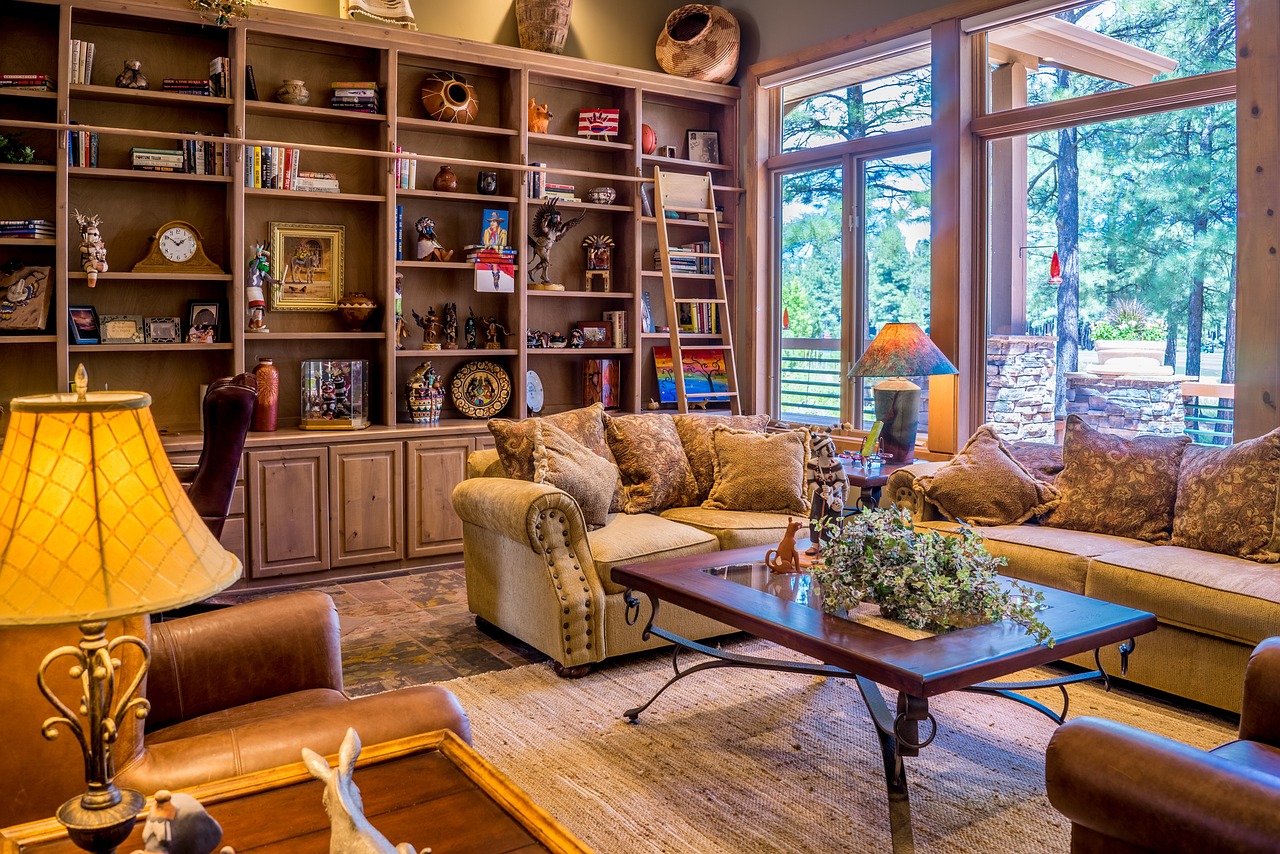
Shower and Bathtub Solutions
When it comes to ensuring the safety and comfort of your ageing relative, the bathroom can often be a tricky spot. Showers and bathtubs, while essential for hygiene, can also present numerous challenges. Imagine trying to navigate a slippery surface or struggling to step over a high tub wall; it’s enough to make anyone anxious. Fortunately, there are several effective solutions to transform these areas into safe havens.
One of the most popular options is the installation of walk-in showers. These showers eliminate the need to step over a tub wall, providing a seamless transition from the bathroom floor to the shower space. Many walk-in showers also come equipped with built-in seating, which can be a game changer for those who may need to sit while bathing. Additionally, adding grab bars within the shower can provide extra support and stability, ensuring that your loved one feels secure while bathing.
For those who prefer a bathtub, consider a transfer bench. This innovative solution allows individuals to sit on the bench outside the tub and then swing their legs over into the tub, minimizing the risk of slips and falls. Furthermore, non-slip mats or adhesive strips can be applied to the tub floor to enhance traction, making it safer for your ageing relative to enter and exit the bath.
Another essential modification is the installation of a hand-held showerhead. This feature allows for greater flexibility and control during bathing, enabling your relative to easily rinse off without having to stand under a fixed showerhead. Coupled with a shower chair, this can make the bathing experience much more comfortable and less stressful.
Moreover, adjusting the water temperature settings can prevent accidental burns. Consider installing a temperature control valve that limits the maximum water temperature, providing peace of mind that your loved one will not be scalded while bathing.
To summarize, transforming your bathroom into a safe and accessible space for an ageing relative involves thoughtful planning and practical modifications. Here’s a quick overview of the solutions discussed:
| Solution | Description |
|---|---|
| Walk-in Showers | Eliminates the need to step over a tub wall, often includes built-in seating. |
| Transfer Benches | Allows safe entry and exit from the bathtub by sitting first. |
| Hand-held Showerheads | Provides flexibility and control for easier rinsing. |
| Temperature Control Valves | Limits maximum water temperature to prevent burns. |
By implementing these shower and bathtub solutions, you are not just enhancing safety; you are also promoting independence and dignity for your ageing relative. After all, everyone deserves to enjoy their bathing experience without fear or anxiety. So, take a moment to evaluate your bathroom setup and consider these modifications; your loved one will thank you for it!
1. What are the best types of grab bars for the shower?
The best grab bars are those that are securely mounted to the wall and can support a significant amount of weight. Look for bars that are textured for grip and come in various lengths to suit different needs.
2. How can I ensure the water temperature is safe?
Installing a temperature control valve is the best way to ensure the water does not exceed a safe temperature. This prevents burns and provides peace of mind for both you and your ageing relative.
3. Are there any financial assistance programs for bathroom modifications?
Yes, many local and state programs offer financial assistance for home modifications for seniors. It's worth researching options like home improvement grants or low-interest loans specifically designed for this purpose.
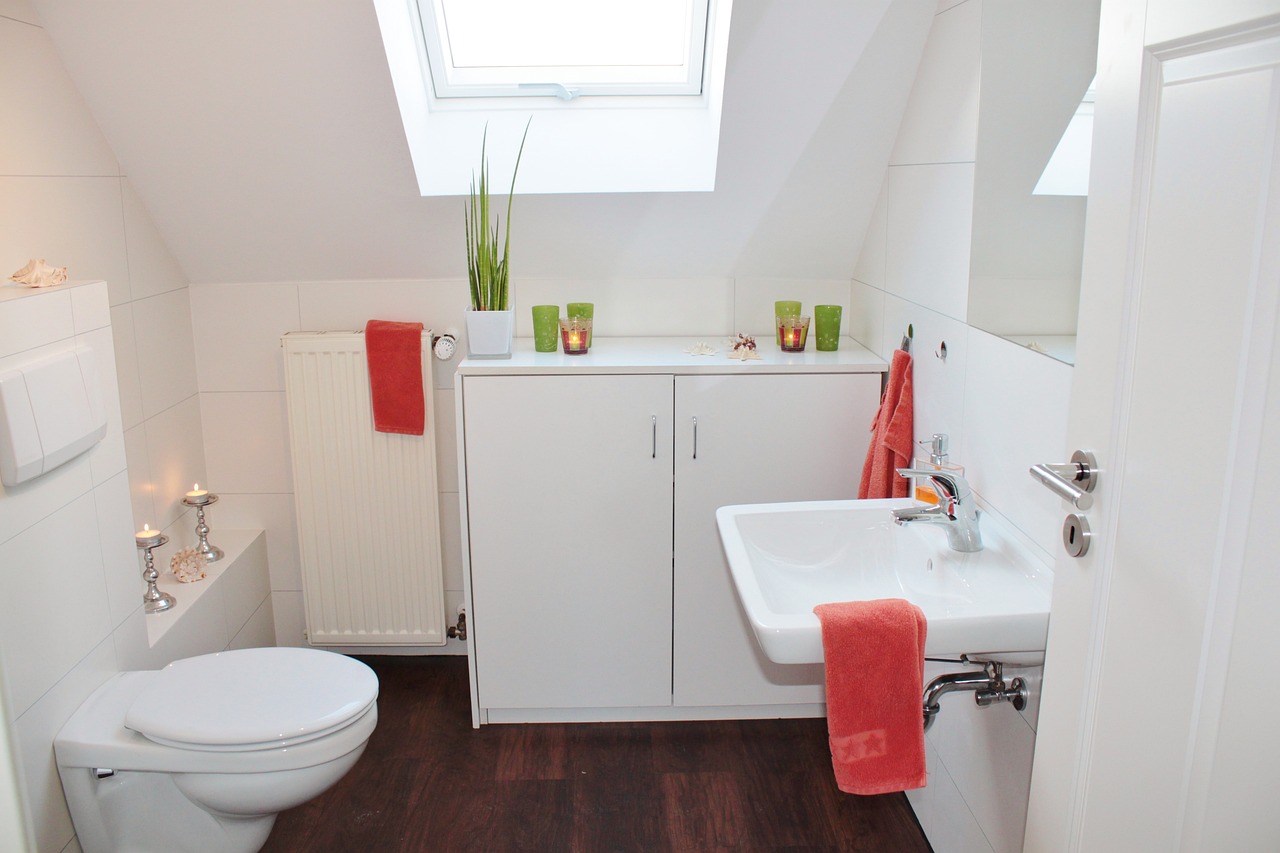
Toilet Safety Features
When it comes to ensuring the safety and comfort of ageing relatives, are often overlooked but are absolutely essential. A bathroom can be a risky place, especially for those with limited mobility or balance issues. Simple modifications can make a world of difference in preventing falls and promoting independence. Imagine a scenario where your loved one can use the bathroom without fear or hesitation—sounds ideal, right?
One of the most effective modifications is the installation of raised toilet seats. These seats elevate the height of the toilet, making it easier for seniors to sit down and stand up. This is particularly beneficial for those with knee or hip problems. Additionally, many raised toilet seats come equipped with armrests, providing extra support when getting on and off the toilet. You might be surprised to learn that a simple change like this can significantly reduce the risk of falls in the bathroom.
Another critical feature to consider is the addition of handrails or grab bars near the toilet. These sturdy supports give your ageing relative something to hold onto, enhancing their stability and confidence. It’s like having a safety net in a place where they often feel vulnerable. Installing these bars is relatively straightforward and can be done in a variety of styles to match your bathroom decor, ensuring that safety doesn’t come at the expense of aesthetics.
It’s also worth mentioning that the layout of the bathroom plays a significant role in safety. Ensure that the path to the toilet is free from clutter and that there’s enough space for a walker or wheelchair if necessary. A well-organized bathroom can prevent accidents before they happen. Consider adding non-slip mats around the toilet area to further reduce the risk of slipping, especially if the floor tends to get wet.
To summarize, here are some key toilet safety features that can make a significant impact:
- Raised toilet seats: Easier to sit down and stand up.
- Handrails/Grab bars: Provides support and stability.
- Non-slip mats: Reduces slipping hazards.
- Clutter-free layout: Ensures easy access and safety.
Incorporating these features not only enhances the safety of your ageing relative but also promotes their independence, allowing them to maintain dignity in their daily activities. After all, who wouldn’t want their loved ones to feel secure and confident in their own home? Taking these steps can lead to a more harmonious living environment where everyone feels comfortable and supported.
Q: What is the purpose of a raised toilet seat?
A: A raised toilet seat makes it easier for seniors to sit and stand, reducing the risk of falls.
Q: Can handrails be installed in any bathroom?
A: Yes, handrails can be installed in most bathrooms, but it's essential to ensure they are securely mounted to support weight.
Q: Are there any specific non-slip mats recommended for bathrooms?
A: Look for non-slip mats that are specifically designed for wet areas and have a good grip to prevent slipping.
Q: How can I ensure my bathroom is clutter-free?
A: Regularly declutter and organize bathroom items, keeping frequently used items within easy reach and out of the way of walking paths.

Kitchen Adaptations
The kitchen is often referred to as the heart of the home, and for good reason! It’s where meals are prepared, families gather, and memories are made. However, when it comes to accommodating an ageing relative, this vital space can present unique challenges. Adapting your kitchen doesn’t just enhance safety; it also promotes independence, allowing your loved ones to feel more at home while cooking or snacking. So, how can you transform this bustling area into a safe haven? Let’s dive into some practical adaptations that can make a world of difference.
First and foremost, consider the layout of your kitchen. A clear and open space is essential for mobility. If your relative uses a walker or a wheelchair, ensure that there’s enough room to maneuver without obstacles. This might mean rearranging furniture or removing unnecessary items from countertops and floors. You'd be surprised how much a bit of decluttering can enhance accessibility!
Another key aspect is the height of kitchen counters and cabinets. Standard counter heights can be a stretch for some, literally! Installing lower countertops or pull-out shelves can make it easier for ageing relatives to reach items without straining themselves. In addition, using easy-to-open cabinets with pull-down shelves can help eliminate the need for reaching up high, which can be precarious and uncomfortable.
When it comes to appliances, think about those that offer ease of use. For instance, consider investing in a side-by-side refrigerator instead of a traditional one, as it allows for easier access to food without bending down. Additionally, opt for appliances with large buttons and clear displays. This small change can significantly reduce frustration and make cooking more enjoyable.
Moreover, let’s talk about safety features. Installing anti-slip mats in front of the sink and stove can prevent falls, which are a major concern for ageing individuals. Similarly, ensuring that all electrical cords are secured and out of the way can reduce tripping hazards. You might even want to consider a fire extinguisher that is easily reachable, just in case! Safety should always be a top priority in any kitchen setup.
Lastly, don’t forget about the importance of good lighting. Bright, well-placed lighting can make a huge difference in how well your ageing relative can navigate the kitchen. Consider under-cabinet lighting to illuminate countertops or motion-sensor lights that turn on automatically when someone enters the room. This makes it easier for them to see what they’re doing, especially during those late-night snack runs!
In summary, adapting your kitchen for an ageing relative doesn’t have to be overwhelming. By making a few thoughtful changes, you can create a space that is not only safe but also inviting and functional. Remember, it’s all about enhancing their independence while ensuring their comfort. Now, let’s move on to a crucial aspect of caregiving: effective communication!
Q1: What are some simple kitchen adaptations for ageing relatives?
A1: Simple adaptations include lower countertops, pull-out shelves, anti-slip mats, and easy-to-use appliances with large buttons.
Q2: How can I improve safety in the kitchen?
A2: Ensure that the kitchen is clutter-free, install anti-slip mats, secure electrical cords, and use bright lighting to enhance visibility.
Q3: Are there any specific appliances that are recommended?
A3: Side-by-side refrigerators, microwaves with large buttons, and ovens with easy-to-read displays are all great options for improving accessibility.

Enhancing Communication
Effective communication is not just a luxury; it’s a necessity, especially when it comes to caring for our ageing relatives. Imagine trying to navigate life without being able to express your needs or understand the world around you. It can feel isolating and frustrating. That's why enhancing communication within the household is crucial for the well-being of your loved ones. By implementing a few simple strategies and tools, you can create an environment where everyone feels heard and connected.
One of the most significant aspects of enhancing communication is ensuring that your ageing relative can reach out for help when they need it. This is where emergency contact systems come into play. Whether it's a medical alert system that they can wear as a pendant or a simple button they can press, having quick access to help can provide immense peace of mind for both them and you. Consider technologies like smart home devices that can alert you or emergency services at the touch of a button. These systems can be a game-changer, especially in situations where every second counts.
In addition to emergency systems, daily communication tools are equally important. Think about the last time you struggled to dial a number on a tiny phone screen. Frustrating, right? For ageing relatives, using large-button phones can make a world of difference. These phones are designed with simplicity in mind, allowing for easy dialing and minimal confusion. Moreover, voice-activated devices like smart speakers can facilitate communication without the need for complicated buttons. Imagine your loved one being able to call you just by saying your name! It’s like having a personal assistant right at their fingertips.
Another effective communication strategy is to establish regular check-in routines. This could be as simple as a daily phone call or a weekly visit. These moments not only keep the lines of communication open but also create opportunities for you to assess their well-being. During these check-ins, ask open-ended questions that encourage them to share their thoughts and feelings. Instead of “Are you okay?” try “What was the best part of your day?” This approach can lead to more meaningful conversations and help you understand their needs better.
Furthermore, consider using technology to bridge the gap. Video calling platforms like Zoom or Skype can allow for face-to-face communication, even if you’re miles apart. This can be particularly beneficial for those who may feel lonely or isolated. Just seeing a familiar face can brighten their day and make them feel more connected to family and friends. Make it a weekly family tradition to gather virtually, share stories, and even play games together. It’s a fantastic way to keep everyone engaged and involved.
Lastly, never underestimate the power of simple gestures. Sometimes, a handwritten note or a small card can speak volumes. Leaving little messages around the house can remind your ageing relative that they are loved and cared for. These small acts can significantly enhance their emotional well-being and foster a sense of belonging.
In conclusion, enhancing communication within your home is about creating an atmosphere of understanding and support. By implementing emergency contact systems, utilizing daily communication tools, establishing regular check-ins, leveraging technology, and incorporating simple gestures, you can ensure that your ageing relative feels valued and connected. After all, communication is the bridge that connects us, and in caring for our loved ones, it’s essential we strengthen that bridge.
- What are some effective emergency contact systems for ageing relatives?
Emergency contact systems can include medical alert devices, smart home technology, and personal emergency response systems (PERS) that allow for instant communication with caregivers or emergency services. - How can I improve daily communication with my ageing relative?
Using large-button phones, voice-activated devices, and establishing regular check-in routines can significantly enhance daily communication. - What technology can help keep my ageing relative connected?
Video calling platforms like Zoom or Skype, along with social media, can help ageing relatives stay connected with family and friends, reducing feelings of isolation. - Are there simple ways to encourage communication?
Encouraging open-ended conversations during check-ins and leaving handwritten notes can foster a supportive communication environment.

Emergency Contact Systems
When it comes to ensuring the safety of your ageing relative, having a reliable emergency contact system is absolutely essential. Imagine a scenario where your loved one has an accident or suddenly feels unwell. In such critical moments, every second counts, and the ability to quickly reach out for help can make all the difference. By implementing effective emergency contact systems, you can provide peace of mind not only for them but also for yourself.
There are various technologies and methods available today that enhance safety and provide a lifeline during emergencies. For instance, medical alert systems are a popular choice. These devices typically come in the form of a pendant or wristband that your relative can wear at all times. With the simple press of a button, they can alert emergency services or designated family members. This is especially important for those who may have mobility issues or live alone.
Additionally, many of these systems come with features like fall detection, which automatically contacts help if a fall is detected. This can be a game-changer for families concerned about their loved ones’ safety. It’s like having a safety net that catches them whenever they stumble, both literally and figuratively.
Another effective method is to establish a family communication plan. This plan should include a list of key contacts, such as nearby family members, friends, and neighbors who can be reached in case of an emergency. You can create a simple table to organize this information:
| Name | Relationship | Phone Number | Availability |
|---|---|---|---|
| John Doe | Son | (555) 123-4567 | Available 24/7 |
| Jane Smith | Daughter | (555) 987-6543 | Weekdays 9 AM - 5 PM |
| Mary Johnson | Neighbor | (555) 555-1212 | Evenings & Weekends |
By having this information readily available, your ageing relative can easily reach out for help if needed. It's like having a personal support network that they can rely on. Furthermore, encourage them to keep their phone charged and within reach at all times. This simple habit can be a lifesaver.
In addition to traditional methods, consider exploring modern technology. Smart home devices can also play a significant role in ensuring safety. For example, voice-activated assistants can be programmed to make emergency calls or send alerts to family members. Imagine your loved one saying, “Hey Google, call my daughter,” and having it done instantly! This not only fosters independence but also keeps them connected.
Ultimately, the goal is to create an environment where your ageing relative feels secure and supported. By implementing robust emergency contact systems, you can enhance their safety and provide them with the confidence to live independently. After all, isn’t it comforting to know that help is just a button press away?

Daily Communication Tools
In our fast-paced world, staying connected with loved ones is more important than ever, especially for our ageing relatives. As they navigate the challenges of daily life, having the right communication tools can make all the difference. Imagine your ageing relative sitting alone, feeling isolated, while a simple device could bridge that gap and keep them connected to family and friends. So, what tools can we provide to ensure they aren't just surviving, but thriving?
First off, let’s talk about large-button phones. These are a game changer! Designed specifically for those who may struggle with fine motor skills or vision impairments, large-button phones feature oversized keys that are easier to see and press. They often come with simplified interfaces, which means less confusion and more confidence when making calls. Many models even include emergency buttons that can be programmed to dial a family member or emergency services with just one press. It's like having a personal lifeline right at their fingertips!
Next on the list are voice-activated devices. These nifty gadgets have revolutionized the way we communicate. Imagine your loved one being able to call you or send a message just by saying a few words. Devices like smart speakers can be set up to respond to voice commands, allowing them to stay connected without the need to navigate complicated technology. Plus, they can access music, news, and even reminders for medication—all while simply speaking! It’s like having a personal assistant that’s always there to help.
But what about video calls? This is where tablets and smartphones come into play. With user-friendly apps like Zoom or Skype, your ageing relative can see your face as they talk to you, making conversations feel more personal and engaging. To make things even easier, consider setting up a dedicated video call device that they can use without hassle. Some tablets come with a "one-touch" feature that allows them to connect with family members instantly. It’s like bringing the family right into their living room!
In addition to these tools, it's essential to think about social media platforms. While it may seem daunting, platforms like Facebook can help ageing relatives stay in touch with friends and family, share updates, and even join groups that cater to their interests. To make this easier, you could assist them in setting up their accounts and showing them how to navigate the platform. Think of it as opening a window to the outside world, allowing them to engage with others and feel less isolated.
Finally, let’s not forget about text messaging. While it may seem simple, texting can be a quick and effective way for ageing relatives to communicate. Many smartphones now have features that allow for larger text sizes, making it easier for those with vision challenges. You can also educate them on how to use emojis or simple phrases to express their feelings, making their messages more vibrant and engaging. It’s like sending little love notes throughout the day!
In conclusion, the right daily communication tools can significantly enhance the quality of life for ageing relatives. By providing them with devices that cater to their needs—whether it’s a large-button phone, a voice-activated assistant, or a user-friendly tablet—you help them stay connected, engaged, and independent. Remember, it's not just about the technology; it’s about fostering connections that enrich their lives and keep them feeling loved and supported.
Q: What are the best communication tools for ageing relatives?
A: Large-button phones, voice-activated devices, tablets for video calls, and text messaging are all excellent options.
Q: How can I help my ageing relative learn to use these tools?
A: Spend time with them, provide simple instructions, and be patient as they learn. Consider setting up the devices for them to ensure ease of use.
Q: Are there specific devices designed for seniors?
A: Yes, many companies offer phones and tablets designed specifically for seniors, featuring larger buttons and simplified interfaces.
Frequently Asked Questions
- What are some common hazards to look for in my home for ageing relatives?
When assessing your home for safety, look for hazards like loose rugs, poor lighting, and cluttered walkways. These can lead to falls and injuries. Consider removing tripping hazards and ensuring adequate lighting in all areas, especially stairs and hallways.
- How can I make my bathroom safer for an ageing relative?
To enhance bathroom safety, install grab bars near the toilet and in the shower. Non-slip mats can also help prevent falls. Additionally, consider using a shower chair or a walk-in tub to make bathing easier and safer for your loved one.
- What kitchen adaptations can promote independence for ageing relatives?
In the kitchen, you can make several modifications, such as using pull-out shelves and installing lever-style faucets. These changes can make it easier for ageing relatives to access items without straining themselves. Also, ensure that frequently used items are within easy reach.
- How can I improve communication with my ageing relative?
Improving communication can be as simple as using large-button phones or voice-activated devices. These tools can help your ageing relative stay connected with family and friends without the frustration of complicated technology.
- What emergency contact systems are recommended for ageing individuals?
Consider installing a medical alert system that allows your ageing relative to call for help at the push of a button. Additionally, ensure that emergency contact numbers are easily accessible and prominently displayed in the home.
- Are there any specific features I should look for in a shower or bathtub?
Look for features like a walk-in design, grab bars, and non-slip surfaces. Transfer benches can also be beneficial, allowing your relative to sit safely while getting in and out of the tub or shower.
- What should I consider when adapting the toilet for an ageing relative?
Installing a raised toilet seat can make sitting and standing easier. Handrails on either side of the toilet can also provide additional support and help prevent falls.


